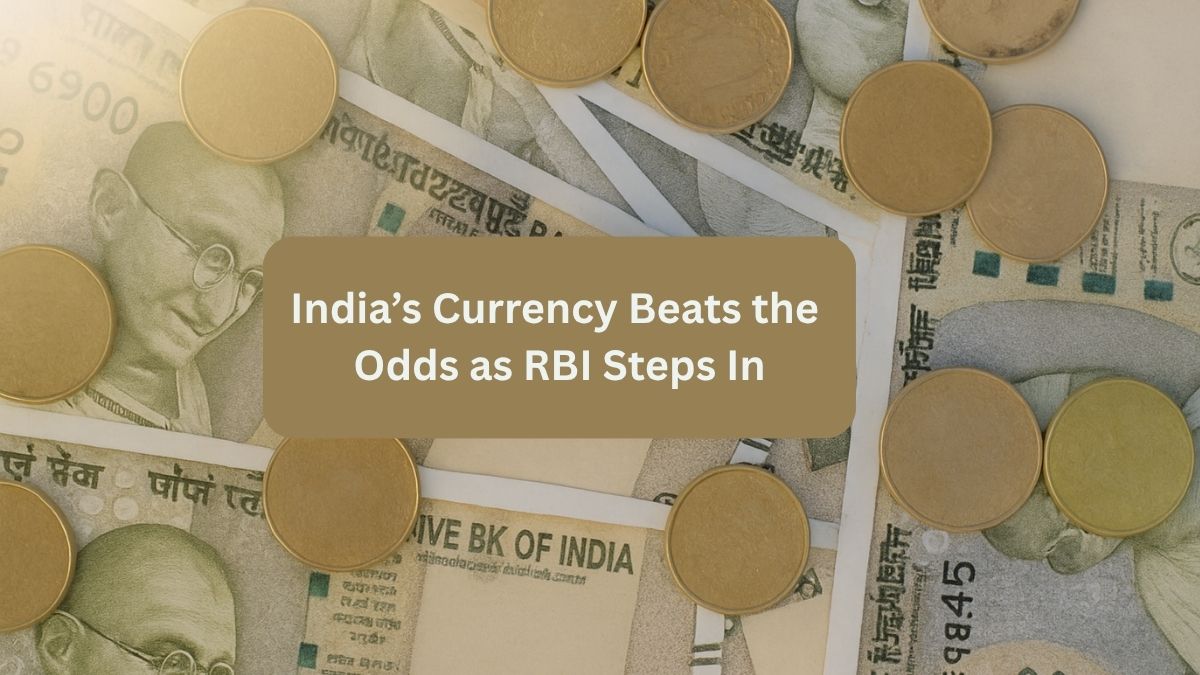After weeks of turbulence in the foreign exchange market, the Indian Rupee Rebounds against the U.S. dollar in a surprising yet welcome development, thanks to what analysts describe as a likely intervention by the Reserve Bank of India (RBI). This comeback marks a much-needed respite for importers, consumers, and investors after the currency had been hovering near record lows for much of October.
What Happened
On 4 November 2025, the rupee closed stronger by 24 paise at 83.09 per U.S. dollar after a series of strategic market operations by the RBI. The central bank reportedly sold dollars through state-run banks to counter heavy foreign demand and keep volatility in check.
According to Reuters, the move came amid renewed dollar buying by importers and portfolio adjustments by foreign banks, which had recently increased pressure on the Indian currency. This rebound provides breathing space for businesses facing higher import costs and for consumers struggling with price hikes.
Why the Move Matters
Currency stability remains critical for India’s economic health. A weaker rupee inflates import bills, drives up inflation, and squeezes corporate profit margins, particularly for industries dependent on imported inputs such as energy, electronics, and machinery.
Conversely, when the Indian rupee rebounds, it helps contain inflation, reduces cost pressures, and boosts investor confidence in emerging markets like India.
In particular:
- Importers: Reduced currency volatility helps lower input costs for companies importing raw materials or capital goods.
- Consumers: Travel, electronics, and fuel prices may see mild relief as a stronger rupee softens the impact of dollar-denominated imports.
- Markets: A firmer rupee signals stability to foreign portfolio investors (FPIs), supporting both bond and equity inflows.
What Triggered the Rebound
The RBI’s actions played a pivotal role. Market analysts believe the central bank used its substantial forex reserves to counter speculative trades and stabilise sentiment. In addition, global cues—such as easing crude oil prices and a softer U.S. dollar index—amplified the rupee’s upward momentum.
Data from TaxTMI and Bloomberg suggested that the RBI has been actively balancing its intervention to prevent excessive appreciation while maintaining orderly conditions.
However, experts caution that this rebound might be temporary unless supported by broader macroeconomic fundamentals. If global oil prices surge again or U.S. interest rates rise, the rupee could face fresh headwinds. As The Economic Times noted, sustained strength depends on a blend of prudent fiscal management and global calm.
Impact on Everyday India
For ordinary citizens, a stronger rupee brings tangible, though modest benefits:
- Overseas travel becomes slightly cheaper, as airfare, hotel stays, and international expenses dip marginally.
- Imported goods, including smartphones and electronics, may avoid immediate price hikes.
- Families and students sending remittances or paying overseas education fees could see small savings over time.
Policy Implications
The latest move underscores the RBI’s commitment to maintaining financial stability. Although the central bank rarely discloses the scale of its market interventions, its message is unmistakable: the rupee will not be allowed to depreciate unchecked.
From a policy standpoint, this episode reinforces three critical themes:
- Reserve Management: India’s robust forex reserves remain the first line of defense against global shocks.
- Inflation Control: A steady rupee helps moderate imported inflation, ensuring prices remain within RBI’s target band.
- Investor Confidence: Predictable currency behaviour encourages steady capital inflows and reduces external vulnerability.
Risks Ahead
Despite today’s encouraging turn, the road ahead is far from smooth.
Rising U.S. bond yields, geopolitical tensions, or a rebound in global commodity prices could all weigh on the rupee. Structural support—through stable growth, a manageable current-account deficit, and prudent fiscal policies—will be crucial to sustaining momentum.
Conclusion
While the Indian Rupee Rebounds may appear as a short-term win, it reflects a deeper story of policy agility and economic resilience. The RBI’s proactive approach has once again demonstrated that timely intervention can restore calm amid volatility. For now, the stronger rupee offers a flicker of relief—but whether it signals the start of a sustained recovery will depend on how global and domestic forces align in the coming weeks.


























